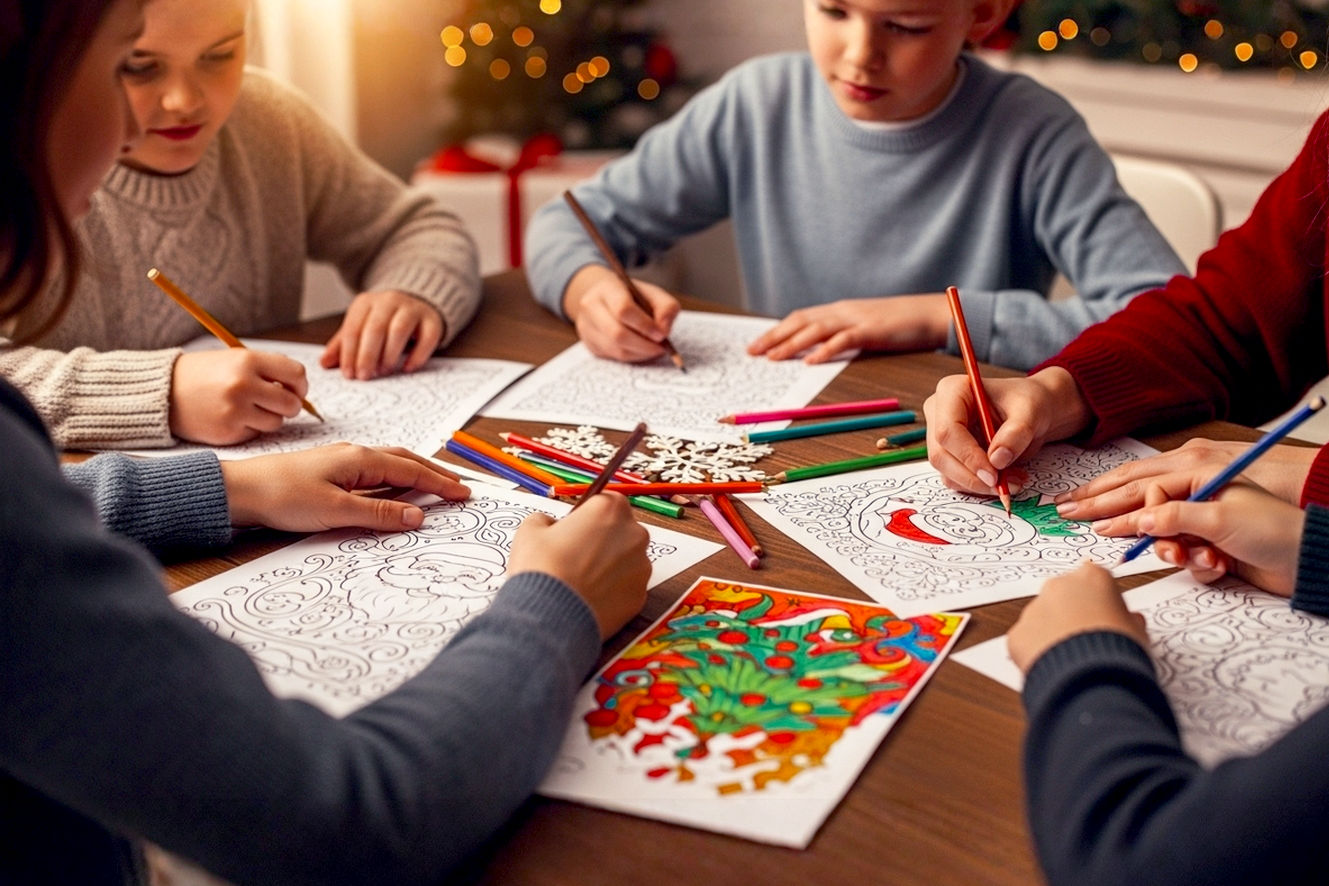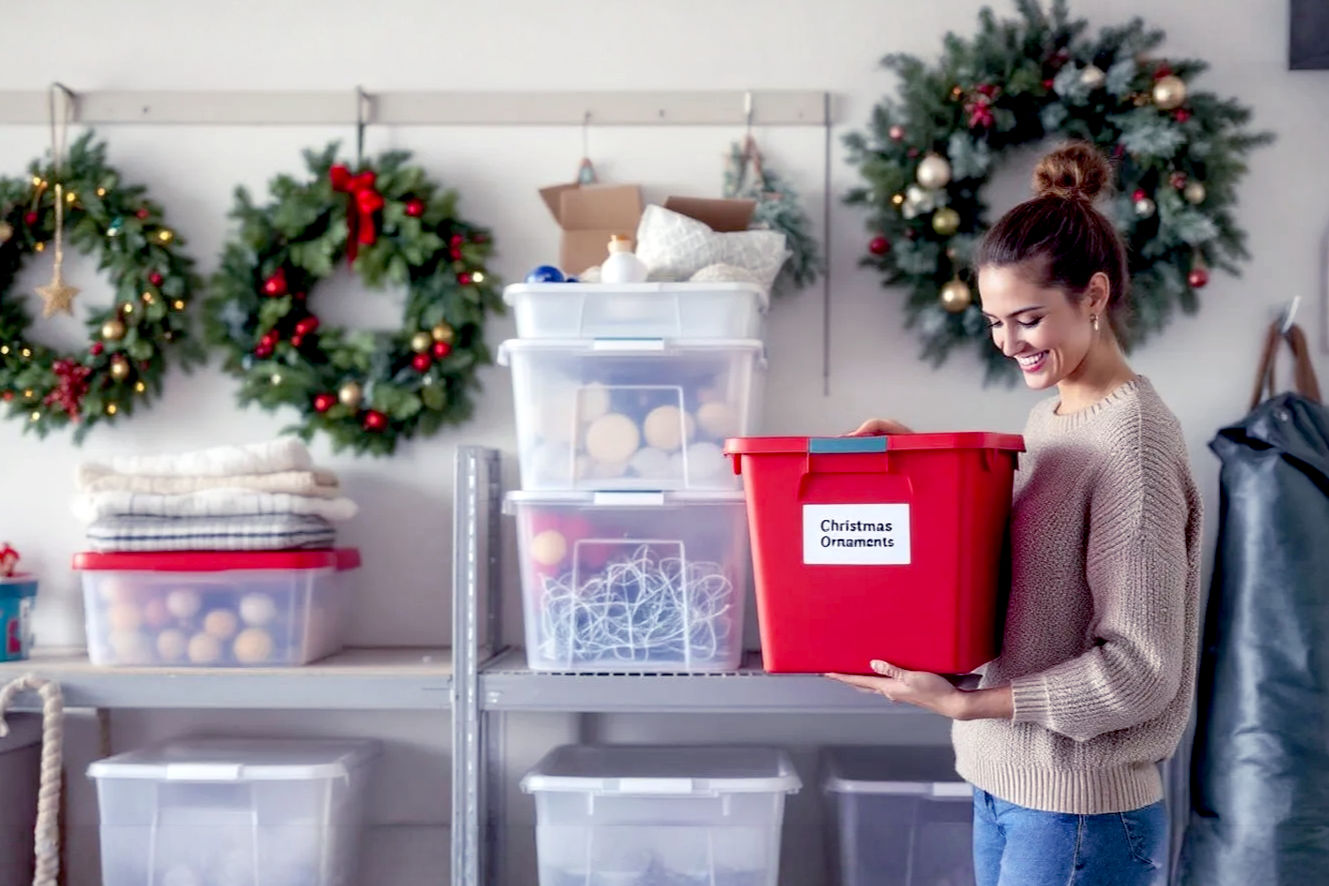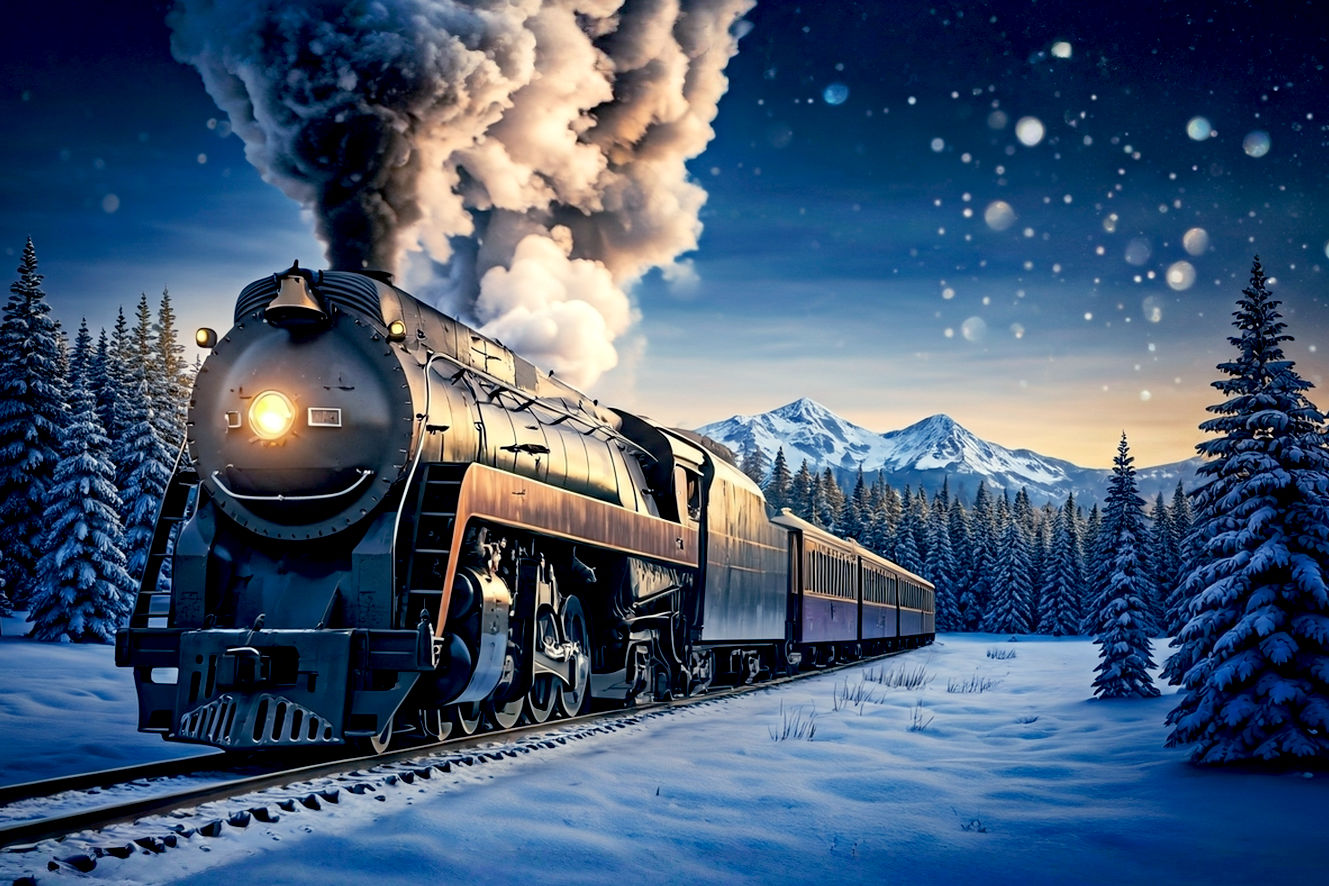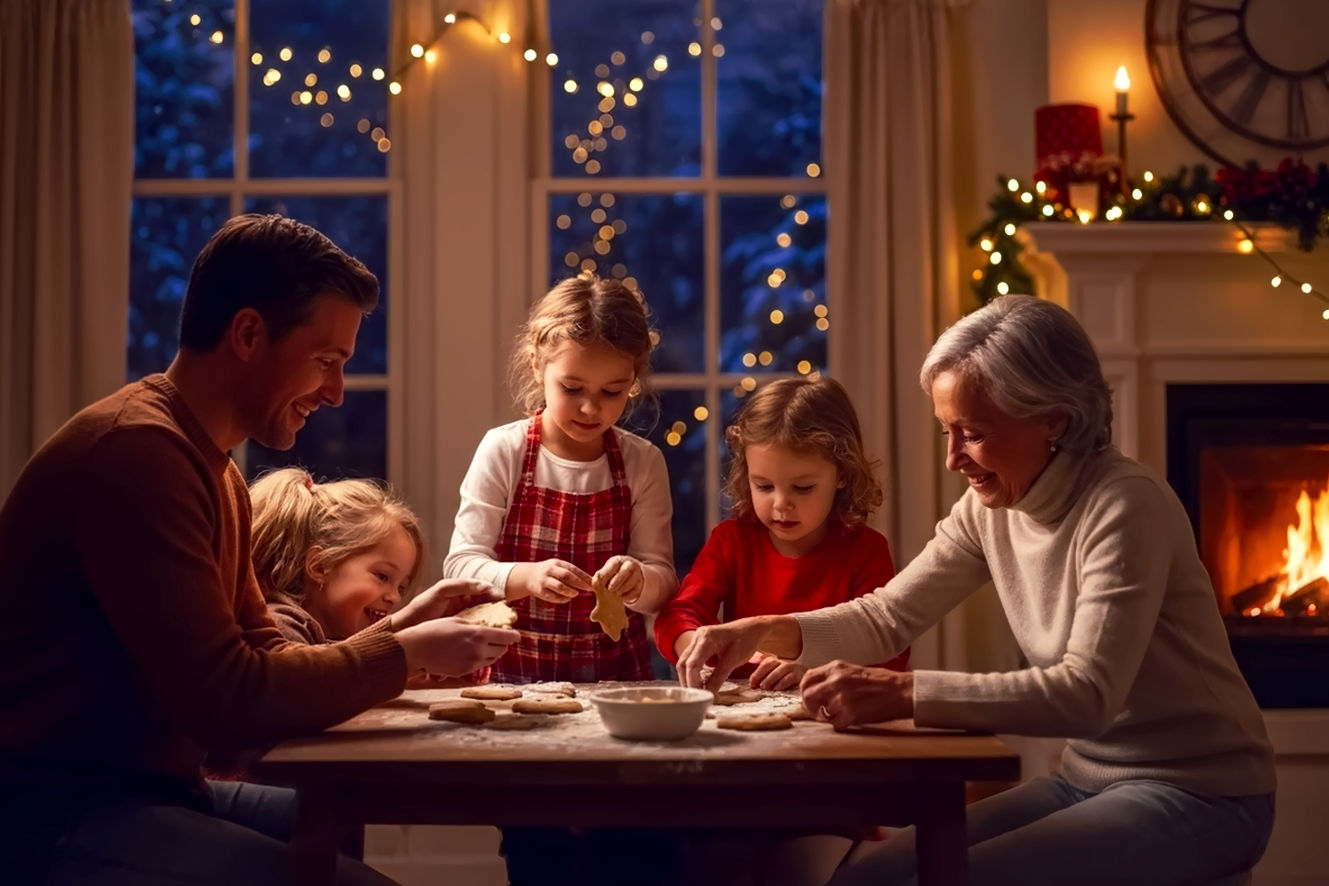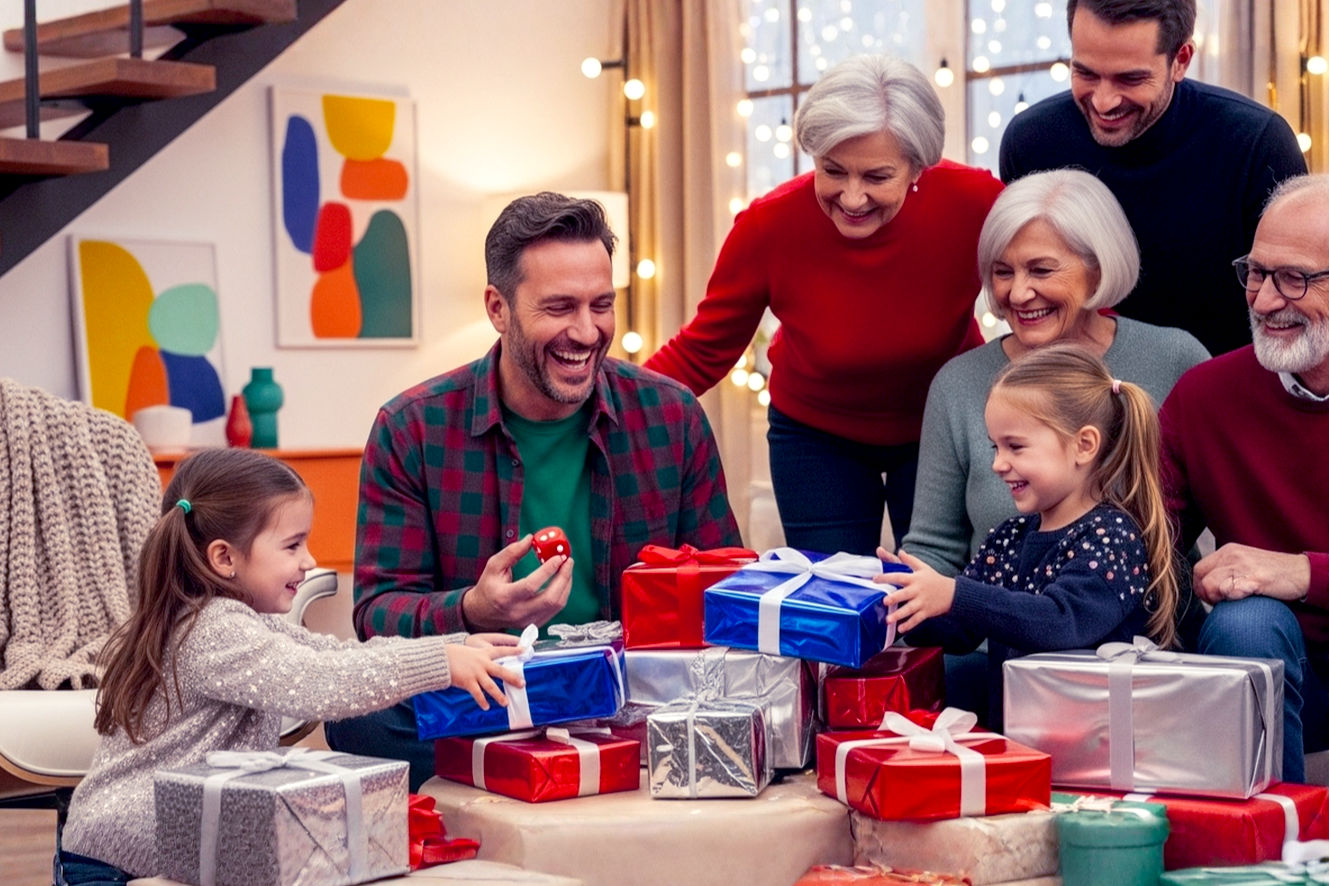This post may contain affiliate links. If you make a purchase through these links, we may earn a commission at no additional cost to you.
The Enduring Appeal of Small-Town Christmas: More Than Just Decorations
The Experiential Difference: Community, Cohesion, and Authentic Tradition
For many, the Christmas season in a big city is defined by towering department store window displays and bustling crowds rushing from one high-end shop to the next. It’s a spectacle of commercial might, dazzling but often impersonal. A small-town Christmas offers a stark and welcome contrast, providing a feeling that can’t be replicated on a grand scale. Here, the holiday season isn’t a commodity; it’s a collective celebration driven by community and authentic tradition. This is the core of its magic, a feeling of stepping back in time to an era when the holidays were about shared joy and simple pleasures.
The difference lies in the intimate scale. In a small town, the main street isn’t just a thoroughfare—it’s the central gathering place. The Christmas tree lighting isn’t a professional production but an event organized by local volunteers, where you’re likely to see your neighbor’s kids singing carols. This grassroots, community-driven approach creates a palpable sense of cohesion. Residents and visitors alike are part of the experience, not just passive observers. This fosters a warmth and authenticity that large-scale events, for all their grandeur, simply can’t capture. The decorations, while often breathtaking, feel more personal. They’re a testament to civic pride, not a marketing budget.
Historical and Cultural Roots: Why Christmas Feels “Different” Here
The unique charm of many small towns during the holidays is often deeply rooted in their historical and cultural origins. Many of the most celebrated Christmas towns in the United States, for example, have direct ties to European settlement and have preserved traditions that have since faded elsewhere. A prime example is the Christkindlmarkt, a tradition imported from Germany and Austria. The name translates to “Christ child’s market,” and its origins can be traced back to the Late Middle Ages. These markets are far more than just a place to shop; they’re social hubs where communities gather to drink mulled wine (glu¨hwein), share food, and celebrate the season.
Towns founded by specific immigrant groups, such as the Moravian communities in Pennsylvania or the German settlers in Michigan, often meticulously maintained their traditional celebrations. These cultural imports are what give these towns their distinct and enchanting holiday feel. Early American traditions also play a role, with some towns recreating the simpler, more homespun celebrations of the colonial era. These historical roots provide a rich, educational backdrop to the festivities. Visitors aren’t just seeing lights; they’re experiencing traditions that have been passed down for centuries, making the experience feel all the more meaningful.
Choosing Your Perfect Holiday Destination: A Guide to Different Types of Christmas Towns
Not all small-town Christmas experiences are the same. They can be broadly categorized by their primary appeal, allowing you to choose the perfect destination for your ideal holiday getaway. Understanding the nuances between these types of towns is crucial for planning a trip that truly resonates with you and your travel companions.
The Authentic European-Inspired Village
These towns are a passport to Europe without the need for a flight. They’ve embraced their cultural heritage and have meticulously crafted an entire townscape around it, creating a truly immersive and unique experience. A classic example is Leavenworth, Washington, which transformed itself from a struggling logging town into a stunning Bavarian village in the 1960s. The architectural details, from the carved wooden balconies to the mural-adorned walls, are authentic to the style, making it feel like a genuine mountain town in Germany.
The key features of these towns include a focus on German-style Christmas markets with vendors selling handcrafted goods, traditional German food like bratwurst and schnitzel, and, of course, the ever-present spiced wine. They often feature year-round Christmas stores like Bronner’s CHRISTmas Wonderland in Frankenmuth, Michigan, which is a destination unto itself. The atmosphere is one of bustling, cheerful energy, complete with live music, street performers, and a palpable festive spirit that feels both foreign and familiar.
The Historical and Colonial Christmas Town
For those who love history, these towns offer a different kind of festive journey. They don’t just celebrate Christmas; they celebrate it within a specific historical context, often recreating the holiday season as it would have been centuries ago. Bethlehem, Pennsylvania, for instance, was founded on Christmas Eve in 1741 by Moravian settlers and is fittingly known as “Christmas City USA.” The town’s celebrations are deeply intertwined with this heritage, featuring candlelight tours, historical reenactments, and the famous “Star of Bethlehem,” a large, illuminated Moravian star atop South Mountain.
Similarly, Williamsburg, Virginia, offers a holiday experience rooted in colonial American traditions. Here, the historical reenactors celebrate Christmas with 18th-century customs. You won’t find inflatable Santas or blinking LEDs; instead, you’ll see natural decorations like holly, fruit garlands, and pine boughs. The focus is on a quiet, reflective, and historically accurate holiday celebration, offering a profound sense of connection to the past.
The Winter Wonderland and Mountain Retreat
If your idea of a perfect Christmas involves a fresh blanket of snow and a roaring fireplace, a mountain town is the ideal choice. These towns pair stunning natural landscapes with festive celebrations, creating a breathtaking visual spectacle. Aspen, Colorado, is a perfect illustration. While it’s known as a world-class skiing destination, it also has a vibrant holiday scene. The town’s “12 Days of Aspen” festival features everything from free ice skating and carriage rides to caroling and live music.
The synergy between winter sports and the holidays is what defines this category. After a day on the slopes, you can warm up with a mug of hot cocoa at an outdoor fire pit while watching the lights twinkle on the snow-covered trees. Sleigh rides are a common activity, allowing you to glide through a quiet, forested landscape with bells jingling. These towns offer a blend of outdoor adventure and cozy, festive charm, appealing to families and couples looking for an active yet romantic getaway.
The Coastal or Unique Regional Christmas Town
Finally, some towns offer a Christmas experience that defies the traditional snowy stereotype, proving that holiday charm isn’t limited to cold climates. St. Augustine, Florida, is a fantastic example. As the nation’s oldest city, it has a rich history that it celebrates with its “Night of Lights” festival. Over two million white lights adorn the city’s historic colonial architecture, creating a breathtaking scene that reflects off the water. The celebration often includes a Regatta of Lights, where decorated boats parade through the bay.
These unique regional towns offer a different flavor of holiday cheer. In some New England coastal towns, you’ll find Lobstermen’s Christmas trees decorated with lobster traps and buoys. This is a great example of how local culture and industry are woven into the holiday fabric. The focus here is on celebrating the holiday season with a twist that is authentic to the region, providing a memorable and distinctive experience.
In-Depth Look at Top US Christmas Towns: Case Studies in Holiday Charm
To truly understand what makes these places so special, let’s dive into some specific examples. These towns serve as masterclasses in cultivating holiday charm, each with its own unique history and traditions.
Leavenworth, Washington: The Bavarian Miracle
The story of Leavenworth is a fascinating case study in reinvention. In the mid-20th century, the logging and railroad industries that had built the town left, and Leavenworth was in decline. In the 1960s, a visionary committee initiated the “Leavenworth Plan,” a deliberate and painstaking effort to transform the town’s entire identity. They adopted a Bavarian theme, requiring all new construction to adhere to the architectural style and encouraging businesses to follow suit.
Today, Leavenworth is famous for its “Village of Lights” festival. Every night from Thanksgiving through February, the town’s half-timbered buildings and snow-dusted trees are illuminated by hundreds of thousands of twinkling lights. The festival features a grand lighting ceremony with carolers and a visit from Santa. The town is also home to the Nutcracker Museum, which houses over 7,000 unique nutcrackers from around the world, ranging from traditional carved wooden soldiers to modern, themed figures. The sheer commitment to the Bavarian theme, from the food (pretzels the size of your head, savory bratwurst, and traditional German beer) to the shops selling cuckoo clocks and authentic apparel, makes the experience feel truly authentic and transportive.
Bethlehem, Pennsylvania: Christmas City USA
Bethlehem’s holiday identity is not a modern creation; it’s its DNA. The town was founded by Moravians, a Protestant denomination with roots in what is now the Czech Republic, on December 24, 1741. This historical detail is at the heart of its holiday celebrations. The Moravian Star, a symbol of their faith, is central to the town’s decor, with a massive star lighting up South Mountain every year. The star is a complex geometric shape, a polyhedral stellation, and its symbolism is a profound part of Moravian tradition.
The city’s famous Christkindlmarkt Bethlehem is a premier example of a German-style market. It’s an indoor market, which is a key operational detail, featuring over 150 artisans selling a wide variety of handcrafted goods, from pottery and glassware to intricate wooden carvings. Visitors can also experience live glass-blowing demonstrations and purchase unique glass ornaments. This is a deliberate choice to cater to the unpredictable Pennsylvania winter weather and to provide a comfortable, high-quality shopping experience. The town also offers historical bus tours that explore the Moravian history and its holiday traditions in a way that modern commercialism can’t dilute.
Frankenmuth, Michigan: Little Bavaria
Frankenmuth also leans into its German heritage, earning it the nickname “Little Bavaria.” However, its fame largely stems from one specific, iconic establishment: Bronner’s CHRISTmas Wonderland. Billed as the “World’s Largest Christmas Store,” it spans over 2 acres and is open 361 days a year. It’s a massive, logistical marvel of holiday retail, featuring over 300 decorated trees and an astounding variety of ornaments, lights, and decorations. The store itself is a tourist destination, drawing millions of visitors annually and fundamentally shaping Frankenmuth’s economic identity.
Frankenmuth’s holiday parade is another major draw, a lively procession complete with floats, marching bands, and, of course, Santa. The town’s culinary scene is a huge part of the draw, with famous family-style chicken dinners at restaurants like the Bavarian Inn and Zehnder’s of Frankenmuth. The atmosphere is unapologetically festive, family-friendly, and slightly larger-than-life, all while maintaining its charming German-inspired architecture and cultural details.
The Broader Spectrum: A Quick Look at Others
While Leavenworth, Bethlehem, and Frankenmuth may be the most well-known, they are by no means the only options. The United States is dotted with smaller, equally charming towns. Mystic, Connecticut, for instance, offers a traditional New England feel with a “Lantern Light Village” event at Mystic Seaport Museum, where visitors can experience 19th-century Christmas celebrations. Ogunquit, Maine, embraces its coastal identity with a “Christmas by the Sea” festival that includes a craft fair, a bonfire on the beach, and a Christmas parade. These examples show that the small-town holiday experience is incredibly diverse, offering a perfect fit for nearly every taste and preference.
Planning Your Trip: Practical Advice for a Magical and Stress-Free Visit
A trip to a charming Christmas town requires more than just a sense of adventure. It demands careful planning and an understanding of the operational realities of visiting a popular destination during its busiest season.
Timing and Booking: Navigating Peak Season
The key to a stress-free trip is to book well in advance. Many popular towns see their accommodations sell out six months to a year ahead of the holiday season. The same goes for tickets to popular events like historical tours or special train rides. Don’t wait until November to start planning; you’ll likely be met with disappointment.
You should also be aware that the busyness of these towns varies significantly depending on the day of the week and the time in the season. Weekends, especially those immediately following Thanksgiving and leading up to Christmas, will be the most crowded. Visiting on a Tuesday or Wednesday in early December can offer a much more relaxed experience, with fewer crowds and potentially lower prices on hotels. The beginning of the season also offers a more authentic feel before the holiday rush fully sets in.
Budgeting for the Holiday Experience
A holiday trip to a charming small town can be surprisingly expensive if you don’t plan. While the ambiance is free, the logistics can add up. Accommodations will likely be at their peak pricing. A modest hotel room that costs $150 in September could easily jump to $400 or more in December. Dining costs can also be a factor, especially if you plan to eat at popular restaurants.
To save money, consider visiting a town that is just a day trip away from where you live, eliminating the cost of a hotel. If you are staying, look for places with a kitchenette so you can prepare some of your own meals. Many towns have free public events like the lighting of the town Christmas tree and window-decorating contests, which offer great entertainment at no cost. You should factor in costs for souvenirs, gifts, and unique local treats, as they are a significant part of the experience.
What to Pack: From Layering to Festive Attire
Packing is more than just throwing a few sweaters in a suitcase. For most of these destinations, you’ll be spending a significant amount of time outdoors, walking from shop to shop or enjoying the markets. Layering is the most important clothing strategy. Start with a base layer of moisture-wicking material, add a warm mid-layer like a fleece or wool sweater, and top it all off with a waterproof and windproof outer layer.
Comfortable, insulated, and waterproof walking boots are non-negotiable. Your feet will thank you after a full day of exploring. And don’t forget the festive attire! Part of the fun of a Christmas town is dressing for the part. Pack a fun holiday sweater, a festive scarf, or a nice hat. This not only keeps you warm but also adds to the joyful holiday atmosphere.
Navigating the Crowds: The Operational Reality of Holiday Towns
The very charm that draws millions of people to these towns is also the source of their biggest challenge: overcrowding. On a busy weekend, it’s not uncommon for a town’s population to swell ten-fold. This can lead to traffic jams, long lines for food, and packed sidewalks.
To manage this, many towns have implemented operational solutions. Check their websites for information on shuttle services or satellite parking lots. Arriving early in the morning is a fantastic strategy to beat the crowds and get a head start on your exploring. Be prepared to wait, and go into the trip with a patient and flexible mindset. Remember that you are there to relax and enjoy the charm, so try not to let the crowds stress you out.
The Unseen Impact: The Economic and Societal Engines of Small-Town Christmas
The vibrant holiday atmosphere in these towns isn’t just created by a few lights and events; it’s a powerful engine for local economies and a vital source of community pride. The festive season is often the most important operational period of the year for these places.
The Tourism Multiplier Effect: Boosting Local Economies
The economic benefits of holiday tourism are significant and are often described by economists as a “multiplier effect.” When a visitor comes to town, they don’t just spend money on one thing. Their spending at a hotel supports not only the hotel staff but also the local laundry service, the food suppliers, and the utility companies. The money they spend on a handcrafted ornament at a local shop directly supports a small business owner. The money they spend at a restaurant helps keep the wait staff employed.
For many small businesses, the holiday season can account for up to 50% of their annual revenue. This influx of tourist dollars is often what keeps these businesses afloat for the rest of the year. The money generated helps to fund other town-wide projects, from improving local infrastructure to paying for more elaborate holiday decorations the following year. This cyclical process is a powerful driver of economic stability.
The Power of Volunteerism and Community Spirit
Behind every festive light display and well-organized parade is an army of dedicated volunteers. These individuals, often unsung heroes, put in countless hours to make the holiday season magical for everyone. They are the ones stringing lights in freezing weather, organizing parade routes, and serving as guides for historical tours.
This isn’t just unpaid labor; it’s a vital social and operational component of the town’s identity. The collective effort of volunteers strengthens community bonds and fosters a shared sense of pride. These events become a central part of the community’s cultural fabric, and the hard work of its residents is what ensures the preservation of these traditions for future generations.
The Challenge of Modernization: Balancing Tradition with Commercialization
As these towns grow in popularity, they face the dual-edged sword of success. The economic benefits are immense, but so are the challenges. There is a constant tension between preserving the authentic, quaint charm that made the town popular in the first place and the pressures of commercialization and managing the influx of tourists.
Towns must navigate the fine line between offering modern amenities and experiences while not allowing the town to be completely taken over by chain stores and generic holiday themes. They must also manage the logistical strain on their infrastructure, from parking to sanitation to public safety. This delicate balancing act requires thoughtful planning, community engagement, and a commitment to protecting the very essence of what makes the town special.
A Look to the Future: Evolving Holiday Traditions in a Changing World
The holiday traditions of small towns are not static; they are constantly evolving to meet the demands of a modern world. This evolution is happening on multiple fronts, from technology to sustainability.
Technological Integration: New Ways to Experience Old Traditions
Technology is playing an increasingly important role in enhancing the holiday experience. Towns are now using interactive light displays that visitors can control with their smartphones. They are also developing mobile apps that provide guided tours of the town, sharing historical facts and hidden gems. Social media is also a powerful tool, allowing these towns to promote their events to a global audience and for visitors to share their experiences in real time, creating a viral loop of holiday charm.
However, towns must be careful to use technology as a tool to enhance the experience, not replace it. The goal should be to maintain the traditional, personal feel while using modern conveniences to improve logistics and visitor engagement.
Sustainability and Inclusivity: The Next Frontier
Modern concerns are also shaping the future of small-town Christmas. Many towns are now prioritizing sustainability, transitioning from traditional incandescent lights to more energy-efficient LED displays. They are also exploring the use of locally sourced, natural materials for decorations to reduce their environmental impact.
There is also a growing movement toward inclusivity. Towns are making efforts to ensure that their events are accessible to people with disabilities, offering things like sensory-friendly hours for those with autism or other sensory sensitivities. They are also becoming more inclusive of diverse holiday traditions, recognizing that Christmas isn’t the only winter holiday and celebrating the richness of various cultural backgrounds. This evolution ensures that the magic of a small-town holiday can be enjoyed by everyone.
Conclusion: The Enduring Magic of a Small-Town Holiday
The allure of a small-town Christmas is a powerful one, and it’s built on a foundation of authenticity, community, and rich history. From the European-inspired villages to the historical colonial towns and the snowy mountain retreats, each destination offers a unique and memorable experience. By understanding the operational realities, planning ahead, and appreciating the deep cultural and economic contexts that power these places, you can ensure your visit is not only magical but also deeply meaningful. It’s a chance to step away from the commercial frenzy of the modern world and rediscover the simple, shared joy that defines the truest spirit of the holiday season. The definitive guide to finding this quaint holiday charm is not just a list of places, but an invitation to a deeper, more connected kind of Christmas.

